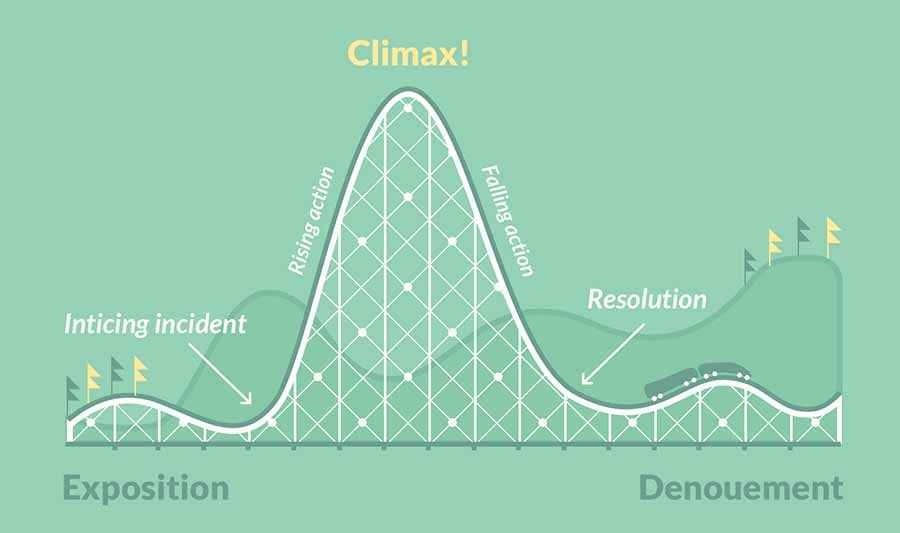The Power of Narrative: The Role of Storytelling in Graphic Design
- By: zekeilchad
- On:
- 0 Comment

Storytelling in graphic design refers to using narrative elements to convey a message or evoke an emotional response from the viewer. It involves using images, typography, color, and composition to tell a story, whether a literal story or a more abstract concept. Storytelling in graphic design aims to create a more engaging and memorable experience for the viewer while also communicating the intended message effectively. By using narrative techniques, designers can create designs that are not only visually appealing but also resonate with their audience on a deeper level.
The Importance of Storytelling in Graphic Design
Storytelling is a fundamental part of human communication and has been used for centuries to convey information and engage people's emotions. In graphic design, storytelling is essential because it helps create designs that are more than just visually appealing; they also communicate a message and connect with the viewer on a deeper level. By incorporating narrative elements into their designs, graphic designers can create experiences that engage the audience's imagination and help them remember the message long after viewing the design. Storytelling in graphic design services can distinguish between a forgettable design and one that leaves a lasting impression.
How Storytelling Helps Create Memorable Designs
Storytelling helps create memorable designs by tapping into the viewer's emotions and imagination. Using narrative elements such as characters, plot, and setting, graphic designers can create designs that tell a story and connect with the viewer on a deeper level. When the viewer feels emotionally invested in the story being told by design, they are likelier to remember and share it with others. Storytelling also helps make designs more relatable and relevant, making it easier for the viewer to understand and remember the message. All of these factors contribute to creating designs that are memorable and impactful.
The Different Types of Stories in Graphic Design
Several types of stories can be incorporated into graphic design. One of the most common is a brand story, which tells the history and values of a company or product. Another type is a user story, which focuses on the experiences and needs of the target audience. Narrative stories, such as those found in comic books or graphic novels, can also be used in graphic design. Finally, there are abstract stories, which may not have a specific plot or characters but instead use design elements to convey a message or emotion.
Storytelling Techniques for Effective Communication
To use storytelling effectively in graphic design services, there are several techniques designers can employ. One technique is to create a clear narrative arc, with a beginning, middle, and end, that guides the viewer through the design. Another technique uses visual metaphors and analogies to help viewers understand complex or abstract concepts. Incorporating humor, drama, or suspense can make the story more engaging and memorable. Additionally, using typography, color, and composition to create a cohesive and visually appealing design can enhance storytelling and make it more effective.
Incorporating Brand Storytelling into Graphic Design
Incorporating brand storytelling into graphic design involves creating designs that communicate the values, history, and personality of a company or product. This can be done through visual elements that reflect the brand's identity, such as color, typography, and imagery. Designers can also use narrative techniques to tell the story of the brand, its founders, or its products. By creating designs consistent with the brand's story and message, designers can reinforce brand identity and create a more emotional connection with the audience.
Examples of Successful Storytelling in Graphic Design
One example of successful storytelling in graphic design is the “Share a Coke” campaign, which used personalized Coke bottles with individual names to create a sense of connection and community among consumers. The design used typography and color to create a cohesive and visually appealing campaign that reinforced the message of sharing and connection. Another example is the Nike “Just Do It” campaign, which used a simple, powerful message and bold visuals to connect emotionally with consumers and reinforce the brand's message of empowerment and determination. Both of these campaigns demonstrate the power of storytelling in creating memorable and effective designs.
Tips for Crafting Compelling Stories in Graphic Design
Crafting compelling stories in graphic design services requires careful planning and attention to detail. One tip is to start by defining the message or concept you want to convey and then identify the narrative elements that best communicate that message. It's also important to keep the audience in mind and create designs that are relatable and relevant to their experiences. Other tips include:
- Using a clear narrative structure.
- Incorporating visual metaphors and analogies.
- Using typography, color, and composition creates a cohesive and visually engaging design.
Testing and refining the design can also help communicate the story effectively.
How Storytelling Can Enhance User Experience Design
Storytelling can enhance user experience design by creating a more engaging and memorable experience. By incorporating narrative elements, designers can create designs that guide the user through a clear and compelling story relevant to their experiences. This helps make the design more relatable and easier to understand, which can improve user engagement and retention. Additionally, storytelling can create an emotional connection with the user, improving brand loyalty and customer satisfaction. Incorporating storytelling into user experience design can help create more effective and impactful designs that resonate with the user. READ MORE…
Related Posts
- The Importance of a Travel Guide: Why You Should Never Travel Without One
- Linked In and its related researches that people made on Internet.
- 7 Proven Digital Marketing Techniques to Boost Your Business in 2023.
- Writing for Medical Education: Tips and Tricks for Effective Teaching
- Workout Routine and Tips
- What is blogging ?
- The Key Principles of User-Centered Design in Web Development Made Simple